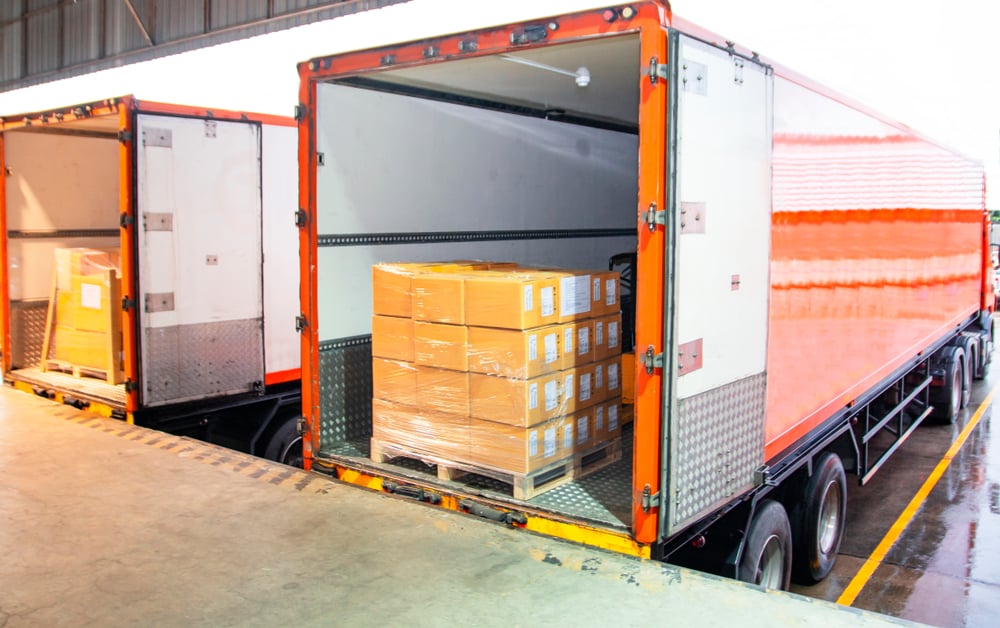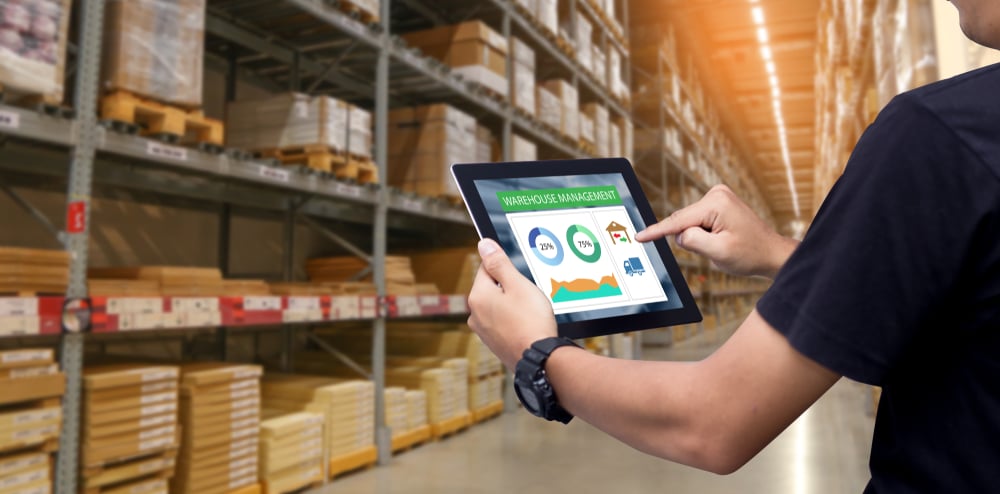Unchain the Supply Chain: Tips for Smooth LTL and FTL Freight Movement
Understanding the differences between an LTL shipment and an FTL shipment can help you save money and increase the efficiency of your supply chain operations.
Understanding LTL and FTL

Do you need a better understanding of your own supply chain? Are you looking at ways to reduce freight shipment costs? LTL and FTL freight shipping are two common truck transport methods.
LTL shipping involves consolidating multiple smaller shipments from various shippers onto a single truck, while FTL shipping uses an entire truck for a single shipment. The choice between LTL and FTL shipping depends on factors such as shipment size, weight, and urgency.
The rise of globalization and e-commerce has further increased the demand for LTL and FTL freight shipping services. Many companies now source materials and sell products worldwide, as the need for reliable shipping options has never been greater. LTL and FTL shipping continue to adapt to these growing demands, with carriers investing in new infrastructure and technology to meet the needs of businesses and consumers alike.
What is a Full Truckload?
A full truckload (FTL) shipment is defined as one that occupies a truck trailer's entire space or weight capacity. Unlike an LTL shipment, FTL shipping is typically used for larger shipments, where the volume or weight of the cargo makes it more cost-effective to use an entire truck.
FTL shipments offer several advantages, such as faster transit times and reduced handling, but can also be more expensive due to the dedicated use of a truck.
Numerous businesses, such as manufacturers, retailers, distributors, and automotive companies, use FLT freight shipments. FTL shipping makes it possible to ship out large items across the country.
Carriers price full truckload shipments based on various factors, including distance, freight classification, weight, and fuel costs.
What is Less than Truckload?
Less than truckload (LTL) shipping is a method of transporting smaller shipments that do not require a truck's entire space or weight capacity. LTL shipments are consolidated with other shipments from various shippers, allowing carriers to optimize truck space and reduce shipping costs.
LTL shipping has its own advantages, such as lower costs for smaller shipments and greater flexibility, but it may also involve longer transit times and increased handling.
The amount of distance between the pickup and delivery locations significantly impacts LTL pricing. As the distance increases, so does the cost of transportation. The weight of the shipment is another critical factor in determining LTL pricing. Carriers usually apply a tiered pricing system based on weight brackets.
Additionally, the freight class also impacts the shipment's cost, with higher classes generally corresponding to higher rates.
Similarities Between Full Truckload and LTL
LTL and FTL shipping involves transporting goods by truck, and carriers often use similar equipment and technology to manage these shipments. Many carriers offer both LTL and FTL services, allowing businesses to choose the best option for their specific shipping needs.
Working with a carrier that offers both options is a great way to gain additional flexibility in choosing the best freight shipment method to meet your needs.
Cost Comparison
Do you wish you could predict and control load cost fluctuations more effectively? Understanding the costs of different shipping methods can help you avoid this problem. For example, the cost of LTL and FTL shipping varies based on factors such as distance, weight, and freight class.
LTL shipping is generally more cost-effective for smaller shipments, while FTL shipping can be more economical for larger, heavier shipments that require the dedicated use of a truck. Businesses can reduce shipping costs by consolidating shipments, optimizing routing, and leveraging technology to improve efficiency.
What About PTL Shipping?
Perishable Truckload (PTL) shipping is another option for businesses, especially ones transporting refrigerated and frozen cargo. PTL shipping is a specialized service that uses temperature-controlled trucks to transport goods at specific temperatures, ensuring the cargo arrives at its destination in optimal condition.
There are several benefits to using PTL shipping for refrigerated and frozen cargo. First and foremost, PTL shipments offer a higher level of temperature control than LTL shipments.
With PTL shipping, the cargo is loaded onto a truck dedicated solely to that shipment. This means there is no risk of the cargo being exposed to other shipments with different temperature requirements.
In addition, PTL shipments typically have shorter transit times than LTL shipments since the cargo is loaded onto a dedicated truck and transported directly to its destination. This can be especially important for perishable goods with a limited shelf life and requiring timely delivery.
Another advantage of PTL shipping is the ability to customize the temperature settings to meet the specific needs of the cargo. For example, some refrigerated and frozen goods require a specific temperature range or must be kept at a certain temperature during transit to ensure their quality and safety. PTL shipping can provide this level of temperature control, which is not always possible with LTL shipments.
Overall, PTL shipping offers several benefits for businesses transporting refrigerated and frozen cargo. With its higher level of temperature control, shorter transit times, and customizable temperature settings, PTL shipping can help ensure that perishable goods arrive at their destination in optimal condition.
Factors Affecting LTL and FTL Freight Movement

Several factors can impact the movement of LTL shipping full truckload freight, including weather conditions, carrier capacity, and demand.
For example, adverse weather can cause delays, while fluctuations in carrier capacity, intermodal rail shipping, and demand can lead to shipping costs and availability changes.
Staying informed about these factors and working closely with a reliable freight broker can help businesses plan for potential supply chain disruptions and better manage their shipping operations.
Best Practices for LTL and FTL Freight Movement
Effective Communication with Carriers
Maintaining clear and open communication with carriers is crucial for successful LTL and FTL shipping. Establishing expectations, tracking shipments, and resolving issues promptly can help ensure smooth freight movement and improve overall supply chain efficiency.
Timely Tracking
Tracking technology to monitor real-time LTL and FTL shipments can significantly improve visibility and reduce transit times. Implementing automated notifications and alerts can help businesses stay informed about the status of their shipments and quickly address any delays or issues that may arise.
Efficient Loading and Unloading
Optimizing the loading and unloading processes for LTL and FTL shipments can minimize handling time and reduce the risk of damage. Using proper equipment and techniques, such as pallet jacks, forklifts, and dock levelers, can help ensure that shipments are loaded and unloaded safely.
Consolidation and Routing
Would you like to outsource parts of your supply chain strategy? Consolidating shipments and optimizing routing can help businesses lower shipping costs and further improve the efficiency of their LTL and FTL freight movement.
Leveraging technology, such as transportation management systems and route optimization software, can help identify opportunities for consolidation and improve route planning.
Supply Chain Visibility
Would you like to see real-time incident notifications of your loads? Having visibility into your entire supply chain is essential for effective LTL and FTL freight management.
Using data and analytics to monitor shipments, identify trends, and optimize operations can help businesses reduce costs and improve overall supply chain efficiency.
Automation and Technology
Are you having trouble keeping up with the latest technology solutions and demands? Embracing automation and technology can streamline LTL and FTL freight movement and simplify shipping processes.
Implementing transportation management systems, digital freight platforms, and other technology solutions can help businesses automate tasks, track shipments, and improve communication with carriers.
Carrier Performance Evaluation
Evaluating carrier performance is crucial for optimizing LTL and FTL shipments. Performance metrics, such as on-time delivery and damage rates, can help businesses assess carrier performance.
All of this information can help you make informed decisions about carrier selection and improve shipping processes.
Key Takeaways and Best Practices for LTL and FTL Optimization

Implementing these best practices can help businesses achieve smoother LTL and FTL freight movement. Following these tips can often result in improved supply chain efficiency, reduced shipping costs, and increased customer satisfaction.
Understanding the differences between LTL and FTL and emerging PTL shipping methods while leveraging technology and automation is vital to success. Choosing the best shipping methods allows businesses to optimize their supply chain operations and thrive in today's competitive market.
More Resources to Explore:
- 5 New Technologies Shaping the Future of LTL Transport
- Top Tips for Choosing the Right LTL Freight Shipping Provider
- Unchain the Supply Chain: Tips for Smooth LTL and FTL Freight Movement
- How is LTL Shipping Adjusting In the Current Economic Climate?



